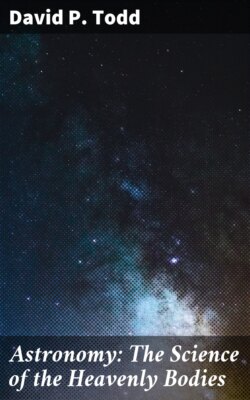Читать книгу Astronomy: The Science of the Heavenly Bodies - David P. Todd - Страница 12
На сайте Литреса книга снята с продажи.
CHAPTER VIII
COPERNICUS AND THE NEW ERA
ОглавлениеTable of Contents
Throughout the Middle Ages the progress of astronomy was held back by a combination of untoward circumstances. A prolonged reaction from the heights attained by the Greek philosophers was to be expected. The uprising of the Mohammedan world, and the savage conquerors in the East did not produce conditions favorable to the origin and development of great ideas.
At the birth of Copernicus, however, in 1473, the time was ripening for fundamental changes from the ancient system, the error of which had helped to hold back the development of the science for centuries. The fifteenth century was most fruitful in a general quickening of intelligence, the invention of printing had much to do with this, as it spread a knowledge of the Greek writers, and led to conflict of authorities. Even Aristotle and Ptolemy were not entirely in harmony, yet each was held inviolate. It was the age of the Reformation, too, and near the end of the century the discovery of America exerted a powerful stimulus in the advance of thought.
Copernicus searched the works of the ancient writers and philosophers, and embodied in this new order such of their ideas as commended themselves in the elaboration of his own system.
Pythagoras alone and his philosophy looked in the true direction. Many believe that he taught that the sun, not the earth, is at the center of our solar system; but his views were mingled with the speculative philosophy of the Greeks, and none of his writings, barring a few meager fragments, have come down to our modern age.
To many philosophers, through all these long centuries, the true theory of the celestial motions must have been obvious, but their views were not formulated, nor have they been preserved in writing. So the fact remains that Copernicus alone first proved the truth of the system which is recognized to-day. This he did in his great treatise entitled "De Revolutionibus Orbium Cœlestium," the first printed copy of which was dramatically delivered to him on his deathbed, in May, 1543. The seventy years of his life were largely devoted to the preparation of this work, which necessitated many observations as well as intricate calculations based upon them. Being a canon in the church, he naturally hesitated about publishing his revolutionary views, his friend Rheticus first doing this for him in outline in 1540.
So simple are the great principles that they may be embodied in very few words; what appears to us as the daily revolution of the heavens is not a real motion, but only an apparent one; that is, the heavens are at rest, while the earth itself is in motion, turning round an axis which passes through its center. And the second proposition is that the earth is simply one of the six known planets; and they all revolve round the sun as the true center. The solar system, therefore, is "heliocentric," or sun-centered, not "geocentric" or earth-centered, as taught by the Ptolemaic theory.
Copernicus demonstrates clearly how his system explains the retrograde motion of the planets and their stationary points, no matter whether they are within the orbit of the earth, as Mercury and Venus, or outside of it, as Mars, Jupiter, and Saturn. His system provides also the means of ascertaining with accuracy the proportions of the solar system, or the relative distances of the planets from the sun and from each other. In this respect also his system possessed a vast advantage over that of Ptolemy, and the planetary distances which Copernicus computed are very close approximations to the measures of the present day.
Reinhold revised the calculations of Copernicus and prepared the "Tabulæ Prutenicæ," based on the "De Revolutionibus," which proved far superior to the Alfonsine Tables, and were only supplanted by the Rudolphine Tables of Kepler. On the whole we may regard the lifework of Copernicus as fundamentally the most significant in the history and progress of astronomy.
